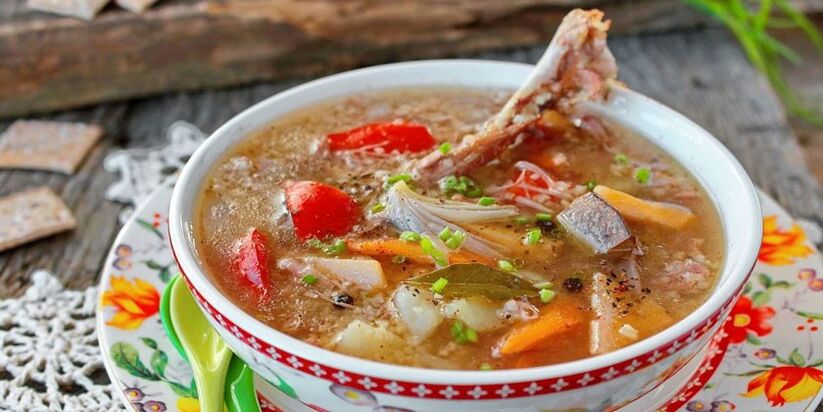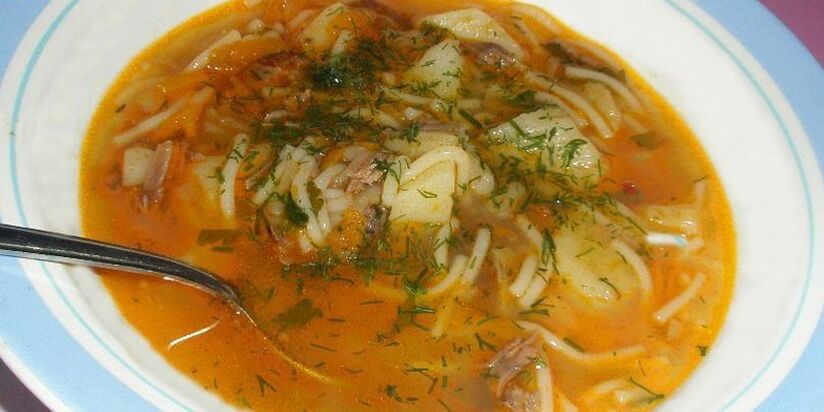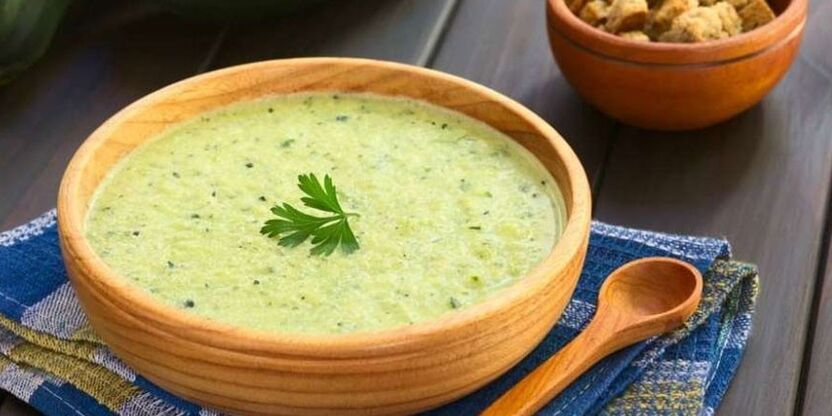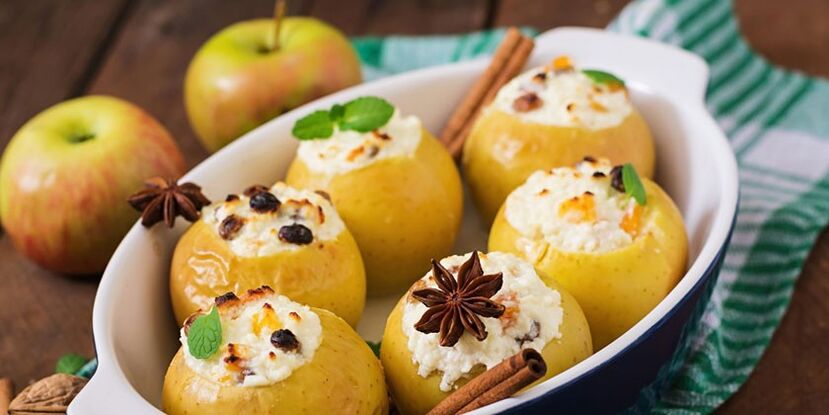A pressing problem of modern man is allergies. This is a type of response by the body to the effects of special substances called allergens. A person encounters them when breathing, when eating, or in contact with the skin. Allergies can affect men and women, children and adults. Its main method of treatment and prevention is a hypoallergenic diet. It is suitable not only for allergy sufferers but also nursing mothers, who can improve the quality of breast milk with the help of such a menu.
What is a hypoallergenic diet?
In medicine, an allergy is an increased sensitivity to external or internal stimuli. In this case, the human body considers harmless substances as antigens. Even with minimal exposure to an allergen, large amounts of IgE are produced. Mechanism of allergic reaction:
- Immunoglobulin IgE, upon first exposure to the allergen, detects it and combines with mast cells and basophils (cells of the immune system).
- The result is a complex one. It includes allergens, IgE, and mast or basophil cells.
- The complex with basophils by the bloodstream penetrates into various organs: the skin, nose, lungs, stomach, and with mast cells it is immobile.
- After re-entering the body, basophils and mast cells secrete special substances - histamine and serotonin. They are needed to fight stimulants.
Histamine interacts with serotonin and causes allergic reactions: contraction of smooth muscles and dilation of capillaries, resulting in thickened blood and edema. Because allergies are often caused by food, the treatment regimen must include a diet, in addition to antihistamines. It also plays an important role in allergic reactions to drugs used in the breeding of birds and animals (antibiotics, salicylates). The diet is based on the following principles:
- exclude products that include cross- and causative allergens;
- eat only fresh produce;
- rejection of histaminoliberators - products that cause the digestive tract to secrete histamine from its cells: chocolate, cow's milk, coffee, wheat bran, orange juice;
- limit animal protein in the diet;
- exclusion of preservatives and products with dyes, preservatives and flavorings;
- limit simple carbohydrates, salt, fried, spicy and salty foods, alcohol;
- eliminate histamine carriers - foods with a high content of histamine in the composition (tomatoes, strawberries, hazelnuts, cocoa, spinach).
General principles
For people with allergies, there is a special diet - table number 5 GA (low allergy). It is based on the therapeutic diet number 5, which is prescribed for diseases of the biliary system and liver. Adults should eat according to the principle of table number 5 for 3 weeks, children - 10 days. This is enough for the permanent disappearance of allergic manifestations. In the future, the diet is formulated taking into account the following principles:
- As symptoms begin to ease, you can switch from antiallergic foods to a less restrictive diet and gradually expand your diet to foods with moderate allergenic activity.
- First, introduce boiled low-fat white fish, bread, fresh onions, pureed fruit, compost.
- During the diet, food is boiled or steamed. Frying and baking will increase the allergen content.
- The diet should be full of protein, fat and slow carbohydrates.
- Each new dietary product is introduced no more often than every 3 days. If there is no negative reaction to it, you can leave it in the menu.
- The optimal nutritional plan is to split it up, in which the number of meals a day reaches 5-6 times.
- Products containing easily digestible carbohydrates are completely prohibited: confectionery, honey, jam, chocolate. Instead of sugar, you can use aspartame, saccharin or xylitol.
- If the cause of the allergy cannot be determined, all causative allergens must be excluded: strawberries, nuts, chocolate, honey, eggs, seafood, caviar, citrus, melons, tomatoes.
- It is important to enrich the diet with calcium, which has anti-inflammatory and anti-allergic properties. This trace element is found in cheese, fermented dairy products.
- All dishes containing allergenic products are excluded from the diet menu. For example, if the reaction manifests itself in eggs, then you need to abandon cream, mayonnaise, casseroles, products rich in flour.

Point
Dieting doesn't just work for food allergies. A special diet helps to reduce the influence of allergens and other groups (drugs, fungi, pollen, household items). During the diet, a person has a reduced risk of increased clinical symptoms of the following diseases:
- Quincke's edema;
- allergic rhinitis;
- hives;
- pathology of the gastrointestinal tract, in which the assimilation of nutrients is disrupted;
- atopic dermatitis;
- asthma;
- summer fever.
List of hypoallergenic foods
When preparing the first dishes, you should use vegetable broth without frying. He must be weak, that is, after 1-2 boils, the water drains out. It is allowed to add various garden herbs. From cereals it is useful to use oatmeal, buckwheat, wheat. Potatoes are allowed as a side dish in the form of mashed potatoes, but only cooked in water. From fermented dairy products, you can use low-fat fresh cheeses, yogurt without additives.
To enrich the body fat, you need to include sunflower oil or olive oil in your diet. Pasta should only be made from durum wheat. Other hypoallergenic products:
Name |
Calories per 100 g, kcal |
Fat per 100 g, g |
Carbohydrates per 100 g, g |
Protein per 100 g, g |
|---|---|---|---|---|
Vegetables, herbs |
||||
Eggplant |
24 |
0, 1 |
4. 5 |
twelfth |
Zucchini |
24 |
0, 3 |
forty six |
0, 6 |
Cucumber |
15 |
0, 1 |
2, 8 |
0, 8 |
Cabbage |
27 |
0, 1 |
0, 1 |
1, 8 |
Squash |
19 |
0, 1 |
4. 3 |
0, 6 |
Broccoli |
28 |
0, 4 |
5. 2 |
3. 0 |
Celery |
twelfth |
0, 1 |
2. 1 |
0. 9 |
lentils |
284 |
1. 5 |
42, 7 |
24. 0 |
Garlic |
143 |
0. 5 |
29. 9 |
6, 5 |
Asparagus |
twenty |
0, 1 |
thirty first |
1, 9 |
Onion |
41 |
0, 0 |
10. 4 |
1, 4 |
Bean |
123 |
0. 5 |
21. 5 |
7. 8 |
Cereals |
||||
Oatmeal |
342 |
sixty one |
59. 5 |
12. 3 |
buckwheat |
313 |
3, 3 |
62. 1 |
12, 6 |
Wheat bran |
296 |
3. 8 |
53, 6 |
15. 1 |
Semolina |
328 |
ten |
73. 3 |
10. 3 |
Cereals |
366 |
7. 2 |
69. 3 |
11, 9 |
Fruits |
||||
Peach |
forty six |
0, 1 |
11. 3 |
0. 9 |
Nectarines |
48 |
0, 2 |
11, 8 |
0. 9 |
Apple |
47 |
0, 4 |
9, 8 |
0, 4 |
Pear |
42 |
0, 2 |
10, 9 |
0, 4 |
Milk Products |
||||
Kefir 0% |
thirty |
0, 1 |
3. 8 |
3. 0 |
Kefir 1% |
40 |
ten |
4. 0 |
2, 8 |
Curd 0. 6% |
88 |
0, 6 |
1, 8 |
18. 0 |
Meat |
||||
Boiled chicken |
170 |
7. 4 |
0, 0 |
25, 2 |
Boiled turkey fillet |
130 |
ten |
0, 0 |
25. 0 |
Boiled beef |
254 |
16. 8 |
0, 0 |
25, 8 |
Beef stew |
232 |
18. 3 |
0, 0 |
16. 8 |
A fish |
||||
Flounder |
90 |
3. 0 |
0, 0 |
15, 7 |
Halibut |
103 |
3. 0 |
0, 0 |
18, 9 |
Snow fish |
69 |
0, 6 |
0, 0 |
16. 0 |
Seaweed |
49 |
5. 1 |
0, 0 |
0, 8 |
Drinks |
||||
Rosehip juice |
70 |
0, 0 |
17, 6 |
0, 1 |
Prohibited food
The list of prohibited foods includes fish and meat broths. Also avoid a hypoallergenic diet of fatty red meats, poultry (goose and duck), whole milk, and most sausages. Strong allergens are citrus fruits, sweets, seafood (squid, mussels, shrimp). The same applies to all salty, sour, and canned foods. The ban also includes:
- Red grapes;
- lemon, mango, grape, grapefruit, pomegranate, banana, orange, tangerine;
- nuts, raisins;
- carrots, chili salad, tomatoes;
- Rice;
- jams, candies, ice cream, cakes;
- condensed milk, sour cream 30%, cheese 40%, cottage cheese, fresh cheese 18%;
- vinegar, mayonnaise;
- lamb, smoked chicken, sausage, sausage, lard;
- semi-finished and canned fish, mackerel, sardines, caviar;
- margarine, coconut and palm oil;
- white and dry desserts, vodka, cognac, beer, liqueur;
- cola, coffee, pepsi, sprite;
- cranberry tree.

Hypoallergenic diet menu
Keeping a food diary can help reduce allergies when eating a hypoallergenic diet. In it, you can record the foods or meals used for the diet and react to them. As a result, you will be able to accurately identify allergens and eliminate them from your menu. Plus, the diary makes it easy to keep track of how varied your diet is. This is important because scientists have found that with the same diet, the chances of an allergic reaction are higher. In the diary, you can prescribe several options for a hypoallergenic diet menu, and then buy only the necessary ingredients.
For children
The hypoallergenic menu for children is formulated according to the same principles as for adults. There is only one important difference - with long-term adherence to such a diet, there is a high risk of protein, carbohydrate and micronutrient deficiencies. This leads to physical retardation. Table 5 is used according to health condition for 7-10 days only at the beginning. The doctor then selects hypoallergenic products specifically for children. Menu options:
Diet menu options |
Breakfast |
Dinner |
Dinner |
|---|---|---|---|
first |
Buckwheat porridge, cheese, apples, tea. |
Potato soup with noodles, steamed cutlet with stewed vegetables, bread. |
Boiled meat with stewed potatoes, tea. |
2 |
Oats flaked in water, dry crackers. |
Lean beef soup without carrots, corn salad, cabbage and cucumber salad. |
Steamed beef dumplings with boiled cauliflower, compote. |
3 |
Buckwheat flakes with kefir. |
Mashed potatoes in water, boiled cauliflower, lean veal, berry jelly. |
Chicken stew with peas and vegetables. |
Name for you
If the hypoallergenic diet for children lasts 7-10 days, then adults can follow it longer - up to 2-3 weeks. The menu in both cases makes practically no difference, since the same list of anti-allergic products is used to formulate it. Dietary options for the day for adults:
Options menu |
Breakfast |
Dinner |
Dinner |
|---|---|---|---|
first |
Crushed buckwheat porridge, green tea with toast, baked apple. |
Steamed chicken cutlet, vegetable soup, rosehip broth. |
Vinaigrette, tea with diet biscuits. |
2 |
Porridge with water, low-fat fresh cheese, apple juice with biscuits. |
Meat cutlets, vegetable soup with flour, tea with biscuits. |
Puree beans, meatballs. |
3 |
Cheese casserole, kefir. |
Veal, buckwheat porridge, vegetable soup. |
Cabbage and zucchini soup, steamed cutlets, rosehip broth. |
Hypoallergenic recipes
The basic rule for choosing recipes is that prepared meals must have a beneficial effect on the digestive tract. For this reason, salting, fermenting and fermenting processes are completely excluded. Steaming or boiling is considered gentle on the stomach. Such preparation methods help to reduce the allergenic activity of the ingredients used. Fruits and vegetables are also best not eaten raw, but stewed or grilled.
The first day
Mainly soups are included in the list of first foods that are hypoallergenic. Potatoes are often used for cooking. Should be soaked in cold water. It takes several hours to reduce the amount of starch in a vegetable. The stock broth should be the second or third course. This means that after boiling, the liquid is drained 1-2 times. So the fat content of the finished soup will be much lower.
Vegetable soup with flour
The special feature of this soup lies in a special ingredient - celery. Dishes with it are often found in various diets, including hypoallergenic ones. Celery tastes like carrots with parsley. Its leaves have a spicy taste and fresh aroma. The benefits of celery are not only for allergies but also for weight loss. In the soup following this recipe, it is combined with potatoes, cabbage, and dill. Garlic adds a little spice to the dish.
Ingredient:
- onions - 0. 5-1 pcs;
- white cabbage - 100 g;
- shredded wheat flakes (bulgur) - 50 g;
- celery - 1 small bulb;
- water - 1, 5-1, 6 l;
- potato tubers - 3 pcs;
- dill or other greens - 1 sprig;
- garlic cloves - 2 pcs.
Cooking method:
- Bring the water to a boil, dip the bulgur in.
- Next, cut the peeled potatoes and put them in the broth.
- Peel the dried onion, chop finely, add the rest of the ingredients and stir-fry.
- Wash celery, dip in broth.
- Once boiling again, reduce heat.
- Simmer for 15-20 minutes under the lid.
- Take some potatoes out, mash them and return.
- Wash the cabbage leaves, dry them, cut them into small pieces and put them in the soup that is almost ready.
- Cook for another 10 minutes, then remove the celery.
- Finely mince the green leaves and garlic cloves, seasoning the soup.

Potato soup with noodles
This dish requires a minimal amount of food. The soup is suitable for both adults and children. There is practically no feel to the onions in the broth because they are already boiled. Due to the fact that vegetables are placed at the very beginning of cooking, the meat becomes very tasty. It's okay to replace the chicken with lean beef, but this will make the soup a bit richer and will take about 30-60 minutes to cook.
Ingredient:
- small onion - 1 bulb;
- greens - to your taste;
- chicken fillet - 800 g;
- premium vermicelli - 200 g;
- potato tubers - 4-5 pcs;
- water - 4 liters.
Cooking method:
- Pour the washed meat with water, set the pan to the highest heat.
- Bring to a boil, drain the water.
- Add more water, bring to a boil again, skim off the foam.
- At this time, peel the onion, chop finely, put it in the broth.
- Reduce heat to low, cook for about 30-40 minutes until the meat is firm, then take it out, cut into bite-sized pieces.
- Cook noodles separately in slightly diluted salted water. This is necessary so that the broth does not become cloudy due to scale.
- Peel, wash and chop the potatoes. Dip the slices in the broth, cook for 5 minutes.
- Then add noodles to boil.

Second
The main dishes are also vegetables or meat. Cutlets, dumplings, meatballs and meatballs are mostly steamed. Meat can be ground, goulash and even roast beef or soup. In the recipe of the final dish, minced meat is mixed with milk sauce, yolks and whipped whites. Soufflé is inherently suitable for the period when you are starting to get used to foods with a moderate allergenicity. Vegetables can be used as a side dish with meat, but only stewed, boiled or grilled because frying will increase the allergy of the ingredients.
Cabbage and zucchini soup
The advantage of pureed soup is a uniform soft consistency, so the dish does not cause discomfort to the stomach and intestines. In such recipes, not only meat is used, but also vegetables. An unusual combination - zucchini and cauliflower. The first vegetable has a neutral taste and is therefore associated with many ingredients. In addition, they have no contraindications. Cauliflower is not recommended for gastrointestinal problems.
Ingredient:
- zucchini - 2-3 pcs;
- onion head - 1 pc;
- celery - 5-7 stalks;
- parsley - 1-2 sprigs;
- water or weak vegetable broth - 1 liter;
- cauliflower - 1 small head of cabbage;
- low-fat sour cream - 100 g.
Cooking method:
- Divide the cauliflower florets into smaller bunches, peel the zucchini, then rinse the vegetables, including the celery.
- Cut the onion head into squares. Repeat the same with zucchini, celery, cauliflower.
- Place all the vegetables in the bottom of the saucepan and cover with water. Bring to a boil, simmer until ingredients are tender.
- Then let cool, transfer to a blender, beat until smooth.
- Pour the mass back into the pot, add sour cream, cook over low heat for a few minutes.
- When serving on a plate, sprinkle chopped herbs on top.

Steamed Dumplings
Kneels are understood as one of the types of dumplings - small balls made on the basis of grinding from fish, poultry or other meats. The difference between the dumpling mass and the cutlet mass is that it is more fluffy and softer. For this reason, dumplings are more suitable for the hypoallergenic diets of children and dieters. Another feature of such a dish is steaming, due to which the meat retains more vitamins. In addition, steam cooling is easier for the stomach to digest.
Ingredient:
- low-fat milk - 2 tbsp;
- egg whites - 2 pcs;
- beef - 800 g;
- bread - 1 slice.
Cooking method:
- Soak bread in half the whole milk, leave for half an hour.
- At this point, chop the meat through a meat grinder.
- Shape the bread, add minced meat, grind it all through a sieve.
- Mix the resulting mixture well, add egg whites.
- Pour in the rest of the milk.
- Shape the ground meat into balls, then put them in the steamer to cook. Cook for 15 minutes.

Desserts
Although sweets are prohibited with hypoallergenic diets, you can still diversify your menu with delicious dishes. You just need to cook them properly. The best hypoallergenic desserts are made with fruit, kefir or cheese. The main thing is that the fermented milk product is not sour. An ordinary pear, cut into pieces or pureed, adds sweetness to them. Cottage cheese is the best base for casseroles. It can also be prepared with the addition of permitted fruits. Baked apples are a popular dessert of the latter. They are even paired with cheese - this dish is delicious and healthy.
Cheese casserole
Because eggs belong to the group of products with high allergenic activity, they are not recommended for use with hypoallergenic diets, especially for children. A casserole can be made without these ingredients. It is also easy to replace flour with tapioca flour, helping the dish to have a thick consistency. To add sweetness, any hypoallergenic fruit is allowed to be added to the curd. It is recommended to add sugar after the end of a strict diet, that is, after 7-10 days.
Ingredient:
- pear - 3 pcs;
- low-fat cottage cheese - 400 g;
- sugar - 1 teaspoon;
- semolina - 4 tbsp. l & agrave;
- kefir or yogurt without any additives - 3 tbsp. l.
Cooking method:
- Take a bowl, place small cheese with yogurt or kefir, mix well.
- Add cereal, sugar. Stir again.
- Wash pears, peel and chop finely.
- Add fruit to curd mass, stir well, transfer to greased baking dish.
- Send to the oven for half an hour. The optimal temperature is 180 degrees.

Baked apple
This is the most popular dessert in the diet and at the same time hypoallergenic. Since people with allergies cannot eat fresh fruit, it can be baked. It will not only be delicious but also good for the stomach. Apples are the perfect fruit for this dessert. They are not only baked in the oven but also baked in the microwave, so delicious dishes are prepared very quickly and easily. To make the dessert more useful, you can stuff the fruit with cheese. Don't just use recipes where honey must be added inside the apple.
Ingredient:
- apples - 3 pcs;
- sour cream with a low percentage of fat - 2 tbsp. l & agrave;
- cottage cheese - 100 g;
- vanillin - on the tip of the knife.
Cooking method:
- Wash the apple, remove the core but leave the bottom of the fruit intact and form a kind of cup.
- Mix cottage cheese with sour cream, add vanilla, let the mass form a homogeneous mass.
- Pour the curd mixture over the apples.
- Place the fruit on a baking tray, bake for 25-30 minutes at 200 degrees.














































